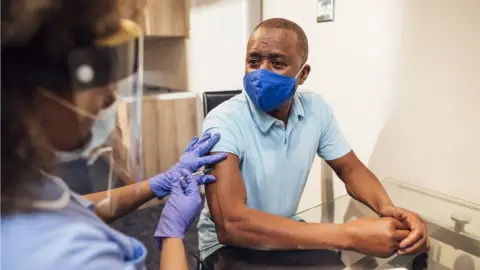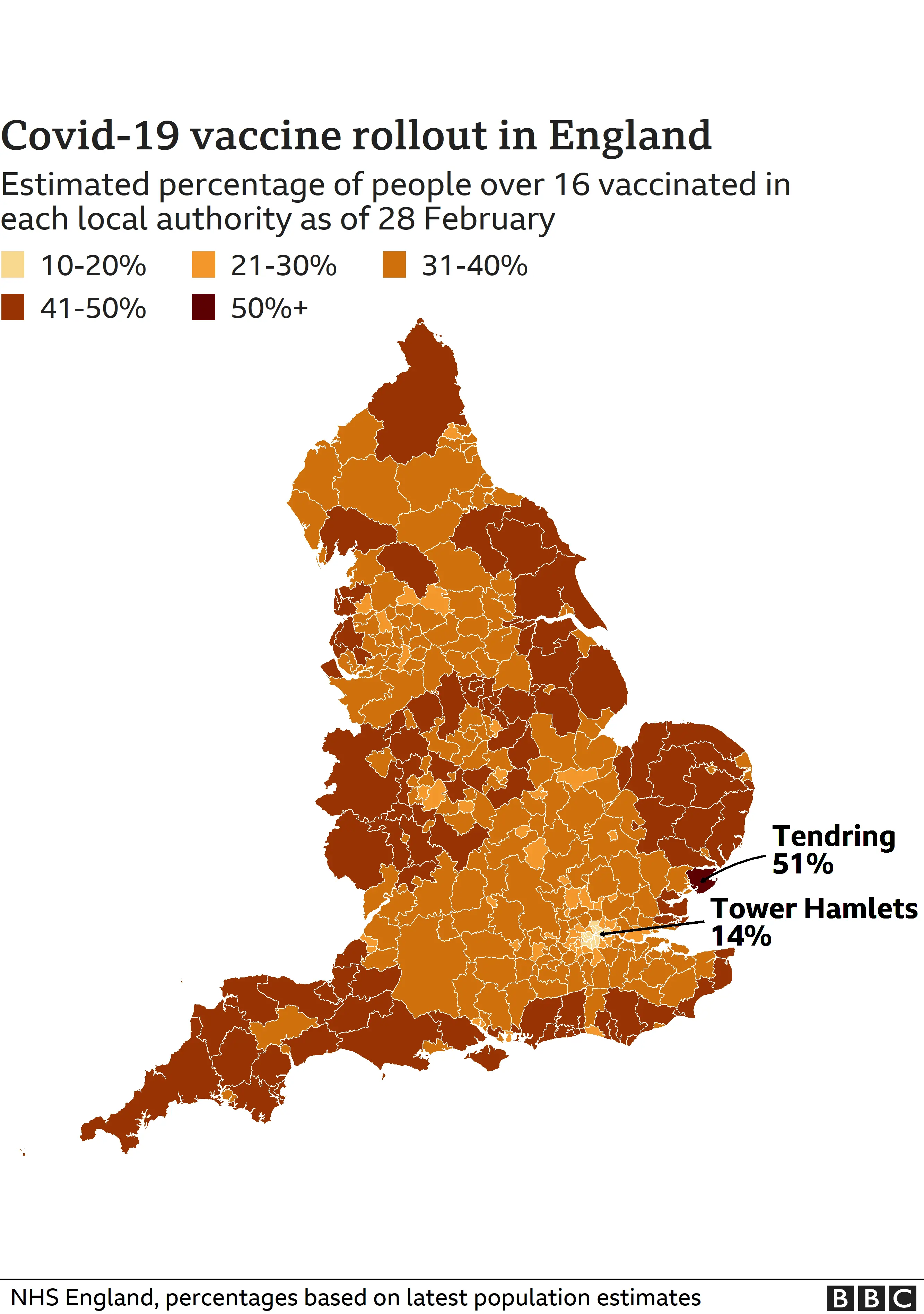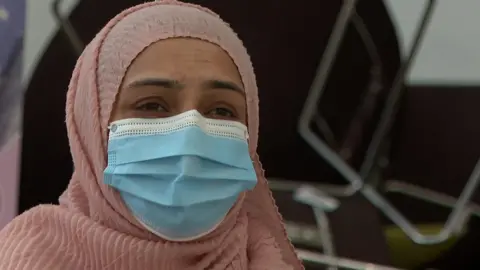England's coronavirus vaccine rollout in maps
 Getty Images
Getty ImagesAs England's coronavirus vaccination programme continues, BBC News has mapped how the rollout is progressing in local areas.
Since 8 December about 18 million people have received at least one dose of a coronavirus vaccine in England.
This covers about 38% of the population over the age of 16, according to NHS England figures.
However, the best available population data is estimated by the Office for National Statistics and the NHS, so the true number is less clear.
Of England's 314 local authorities, NHS data suggests Tendring in Essex vaccinated the highest percentage of its estimated population, as of 28 February, at 51%.
Tower Hamlets in London vaccinated the lowest, at 14%.


The NHS also publishes figures down to a more local level, officially called Middle Layer Super Output Areas. About 6,800 of these exist across England, with an average population of about 8,000.
Of these areas, Saxmundham and Coldfair Green, on the East Suffolk coast, vaccinated the highest percentage of people across the country, at 66%.
The figures suggest more than 5,500 of the areas estimated 8,500 residents received a first dose.


Meanwhile the inner-city Cathedral and Kelham area of Sheffield vaccinated the lowest proportion of residents, at 4%, with 815 people receiving a vaccine dose out of an estimated 18,000 people living there.


Why are there differences between areas?
It is likely parts of the country may appear to have had a higher uptake so far due to the way the vaccine rollout has been organised - by prioritising certain groups of people.
Areas order vaccine supplies based on the number of patients in eligible priority groups, according to NHS England.
This means areas with fewer people in those groups are likely to have lower coverage at first.
In Tendring, 65,774 people were vaccinated out of an estimated 130,000 people living there, while in Tower Hamlets 43,335 people were vaccinated out of more than 300,000 people.
But these estimates also show more than a third of people, 34%, living in Tendring were 65 or older, while in Tower Hamlets it was 6%.
In particular, the number of clinically vulnerable people and care home residents in an area can affect its overall percentage, as these groups were high on the priority list.
Are there other reasons for lower uptake?
Another factor which can affect vaccine uptake is vaccine hesitancy.
Dr Farzana Hussain, a GP in the London Borough of Newham, said the majority of patients who were eligible for but had not yet taken the vaccine in her area were from BAME communities, which had many "questions and fears".

Dr Hussain said these communities often had concerns over whether the vaccine was compatible with their religion, over possible effects on fertility and other "strange claims" seen on social media.
"I'm very disturbed by the amount of misinformation that's going round, I don't know where it's coming from," she said.
"It isn't so much that people are resistant [to being vaccinated], I think people are more fearful and they want their questions answered," she added.
NHS England said staff were continuing to reach out to faith and other community organisations in London and address concerns from people in Black, Asian and other ethnic groups.
"We're seeing a high uptake and strong enthusiasm for the vaccines across the country," a spokesman said.
He added every region of England had hit the government's target of offering the dose to the first four eligible groups.

Data was taken from the weekly NHS England publication on coronavirus vaccines by local authority and MSOA area, published on 4 March.
Population estimates for these groups are from the National Immunisation Management System and should be viewed as an 'at least' figure.
Some people may not have been counted in the NHS data for an area if their age was unknown.


- VACCINE: When will I get the jab?
- NEW VARIANTS: How worried should we be?
- COVID IMMUNITY: Can you catch it twice?
- LOOK-UP TOOL: How many cases in your area?

